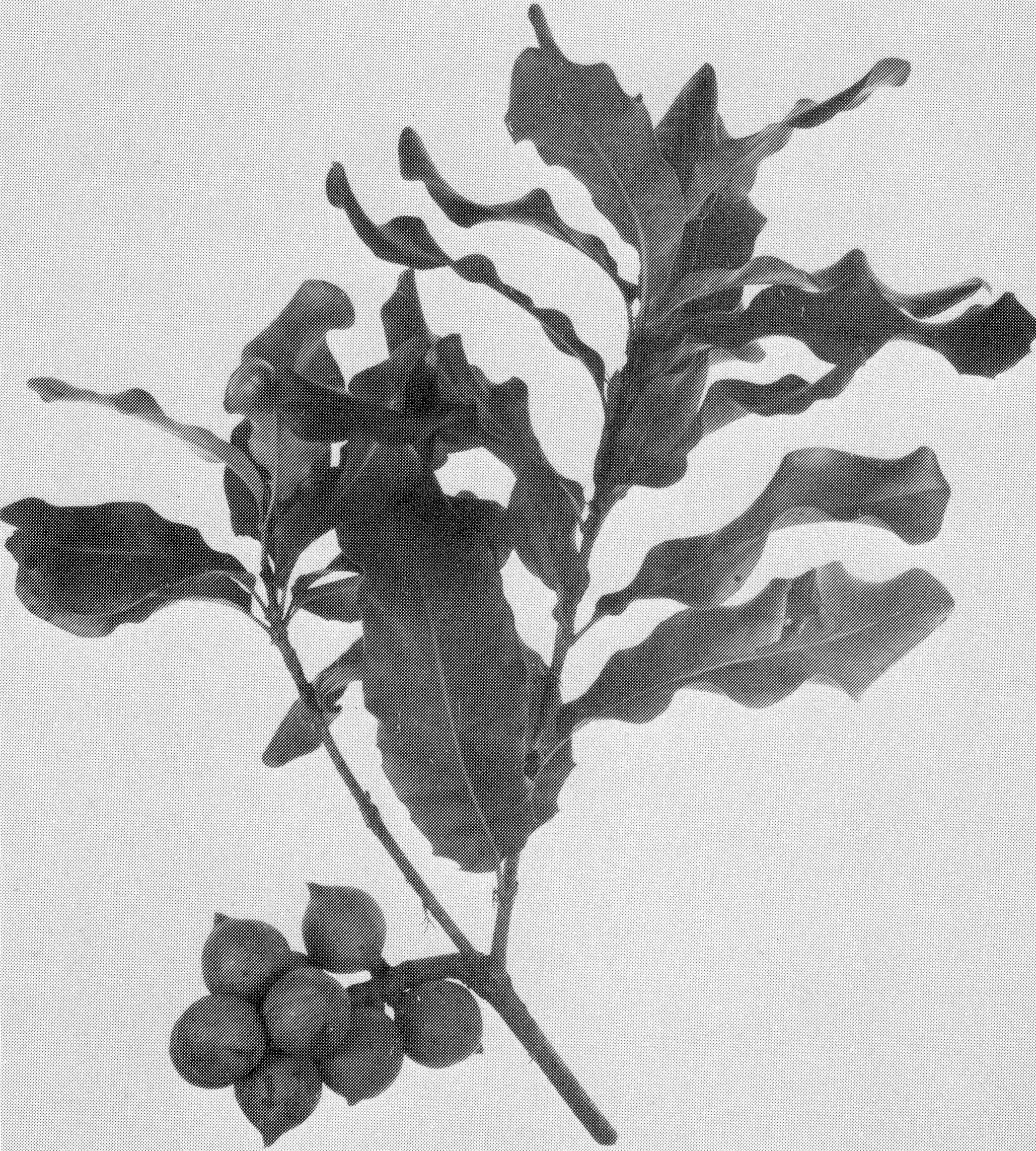PolygonaceaeCoccoloba uvifera (L.) L.Common names: seagrape (English); uva de la playa, uva de mar, uvero macho (Spanish); raisinier, raisinier bord de mer (French); uva de praia (Portuguese). Origin: Tropical America. Distribution: Pantropic. Cultural requirements: Warm tropical lowlands, coastal areas. Tolerant of considerable range in rainfall, variety of soil conditions, salinity in soil. Easily injured by frost. Description: Shrub or tree to 10 m, depending on environment. Propagation by seed (can be propagated by cuttings, layering). Usually dioecious. Fruit spherical to ovoid, 1-2 cm in diameter, in clusters, exterior color red to purple Utilization: Pulp eaten fresh, in jellies. Flavor sweet to subacid; limited appeal. Little potential as food crop. Important ornamental plant. References: Fouqué 1974. ProteaceaeMacadamia integrifolia Maiden et BetcheCommon names: macadamia nut, Queensland nut, smooth-shell macadamia (English); macadamia (Spanish, French). Origin: Australia. Distribution: Tropics and subtropics with suitable climate. Cultural requirements: Cool tropical or subtropical climate with well-distributed medium to high rain-fall. Not tolerant of frost or excessive heat. Areas of adaptation limited because of exacting climatic requirements. Description: Tree to 16 m. Propagation by seed, cut-tings, grafting. Flowers February-April (Florida). Fruit matures September-November (Florida). Some fruit produced nearly all year in California. Fruit spherical, 1.5-3 cm in diameter, in small clusters; husk green, nut brown, kernel white or yellowish. Utilization: Kernel of seed eaten fresh, roasted. Flavor excellent; high appeal. Good source of protein; rich in oil. Potential great for expansion in areas with suitable climate. Commercial production in Australia, Rhodesia, South Africa, U.S.A. (California, Hawaii). References: Hamilton and Fukunaga 1959, Leon 1968, Storey 1959, 1965. |
Macadamia
tetraphylla L. A. S. Johnson Common names: macadamia nut, rough-shell macadamia, spiny leaf macadamia, rough-shell queensland nut (English). Origin: Australia. Distribution: Tropics and subtropics with suitable climate. Cultural requirements: Cool tropical or subtropical climate with well-distributed rainfall. Fertile, deep, medium-acid soil. Not tolerant of frost or very hot weather. Description: Tree to 16 m. Propagation by seed, cut-tings, grafting. Flowers February-April (Florida). Fruit matures September-November (Florida), September-January (California). Fruit spherical to ovoid, 1.5-3.5 cm in diameter, in small clusters; husk green, nut brown, kernel whitish Utilization: Kernel of seed eaten fresh, roasted. Flavor excellent; high appeal. Rich in protein, oil. Good potential for expanded cultivation. Commercial production in same areas as M. integrifolia. References: Hamilton and Fukunaga 1959, Storey 1959, 1965. 
Figure
27. Macadamia nut, Australia's contribution to the Tropics.
|